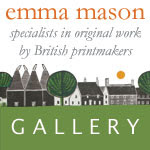
Peter Greenhalf: Photography
I’m one of a small number of photographers working today who still print and tone B/W silver gelatin images by hand, in the traditional way. My interest lies in the unpredictability of employing so many toners on each image, because the chemicals always react differently. Each time I develop and tone an image I get a different result. No two photographs can ever be the same: each one is unique.
Exhibitions:
At present I have my second exhibition of landscape photography running in France. This one is a project exploring the similarities and differences between the two coastlines and is showing at the Marquenterre wildlife centre in Picardy.
In the UK, my latest exhibition at Henry Paddon Contemporary Art runs from 27th October. I’m taking part in the Tunbridge Wells Museum art exhibition from 2nd November and the Rye Art Gallery Christmas show. I’ll also be hosting the Rye Harbour Contemporary Art and Craft Open Studios with jeweller Ruth Praill on the first weekend in December (info@greenhalfphotography .co.uk).
1) Money spent on maps is never wasted because they show you things in the landscape you never knew were there.
2) Favourite living artist ?
Kenro Izu, a man not afraid to carry a 300 pound camera to the top of a mountain in Tibet in order to find a sense of the sacred in his work. I’m also interested in the process Izu uses to create his own palladium-coated paper and his use of 14 x 20 inch negatives.
3) Favourite historical artist?
Edward Weston for his ability to eroticise the simple bell pepper, his skill in bringing out the mysteries of nature and for his little known abilities as an Apache-dancer.
4) What place has inspired you?
Day to day it has to be Sussex because I love the downland and the coastline of this part of England. But Avebury has also been incredibly inspirational. I’ve always been fascinated by Neolithic sites and my photographs of the circle at Avebury really marked the start of my serious exploration of these ancient and sacred places.
5) Who buys your work?
I think what defines the people who buy my landscapes is a sense of individuality; they’re not led by the views of the crowd. Landscape photography is beginning to enjoy a revival at the moment and so my buyers are all pretty astute at spotting an upward trend. They’re also looking for craft and quality above everything else. I print and tone by hand, I cut all my mounts by hand and I have each frame made by local craftsmen to fit each photograph. This level of skill and care is reflected in the finished photograph and that’s what makes them appealing to people who are looking for something more than just an image.
6) Last piece of art purchased? The Wood Pool, an etching by Flora Mc Lachlan. I bought it at the last BAF where Flora had a stand just round the corner. I love this image of a stag drinking at a moonlit pool in the forest. It’s dark and mysterious and full of secrets. I think Flora really catches the sense of magic and the unknown in nature.
7) How do you start a new project?
My projects are all quite measured and slow to come to life. I do a lot of pondering before I start work. I’m not one of these photographers who always carry a camera and never stop shooting. The things that inspire me to take a photo are often quite specific: a particularly graphic intersection of water and land, the way light falls on water, or the movement of clouds.
8) Where and what is your studio?
The whole place is pretty much devoted to photography. I process film downstairs; my studio is the entire middle floor of the building and my dark room is on the top floor. Because the place is so open, it’s easy to convert into a gallery, which I regularly do when I hold open studio events. I’m lucky because I live on the edge of the bird reserve at Rye Harbour and the beach is only a few minutes walk away.
9) How much do you bend your ‘vision’ to suit the market place?
Not at all. Until recently landscape photography was fairly unfashionable, but it’s what fulfils me and so that’s what I do. I think if you try to adapt your style to suit a market, then it’s really obvious and people see through you. I think trying to produce work to please other people instead of yourself makes your work lose most of its integrity.
10) Are there other fields you’d like to apply your work to?
Yes, lots. At present I’m working on several projects. I’m exploring a variety of different printing techniques and the possibilities of hand-made paper using British native plants. I’m also very interested in older techniques that can be given modern applications, such as salt printing, sun printing and cyanotypes.
Thursday, 25 October 2007
ARTIST OF THE WEEK - PETER GREENHALF
Posted by
Jon
at
17:31
![]()
Labels: Brighton Art Fair, Edward Weston, landscape, Marquenterre, Photography, Rye Harbour, silver gelatin
Subscribe to:
Post Comments (Atom)







1 comment:
Hi Peter
I really love your work and I'd be interested in featuring it on my website Brighton POD.
Take a look and see what you think
Robin
Post a Comment